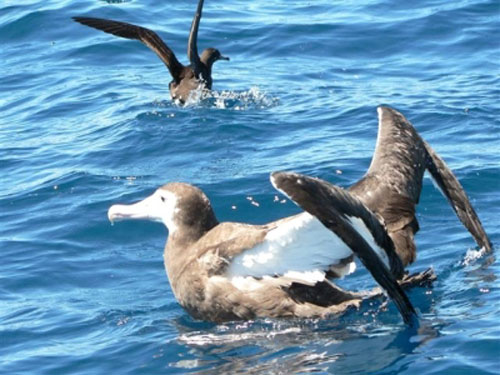José Xavier (Institute of Marine Research, Department of Life Sciences, University of Coimbra, Portugal) and colleagues, writing in the ICES Journal of Marine Science have looked at the tricky problem of quite how seabirds, including Southrn Ocean mollymawk and great albatrosses, get to eat deep-dwelling cephalopods.
The paper's abstract follows:
"Cephalopods are important prey for numerous seabird species. However, the physical mechanisms by which cephalopods (particularly species considered as deep-dwelling) become available to seabirds are poorly understood, and it has recently been suggested that the discarded stomachs of gutted fish captured by tuna longliners can be a major source of deep-dwelling species. Here, we identify some deep-dwelling cephalopods that appear in the diet of seabirds, review the current knowledge of their vertical distribution, and compare the stomach contents of commercially captured tuna with those of seabirds foraging in the same area. The limited available information leads us to conclude that tuna longliners are unlikely to be a major source of deep-dwelling cephalopods for seabirds. However, much more information is required on the ecology of seabird prey, particularly commercially unexploited cephalopod species, which may be obtained from scientific cruises devoted to cephalopod biological research. In addition multispecies/foodweb modelling studies may be required to explore potential interactions between seabirds, their predators and prey, and commercial fishing operations."

A young Wandering Albatross at sea: how does it scavenge squid?
Reference:
Xavier, J.C., Cherel, Y., Roberts, J., & Piatkowski, U. 2013. How do cephalopods become available to seabirds: can fish gut contents from tuna fishing vessels be a major food source of deep-dwelling cephalopods? ICES Journal of Marine Science 70: 46-49.
John Cooper, ACAP Information Officer, 19 December 2012

 Français
Français  English
English  Español
Español